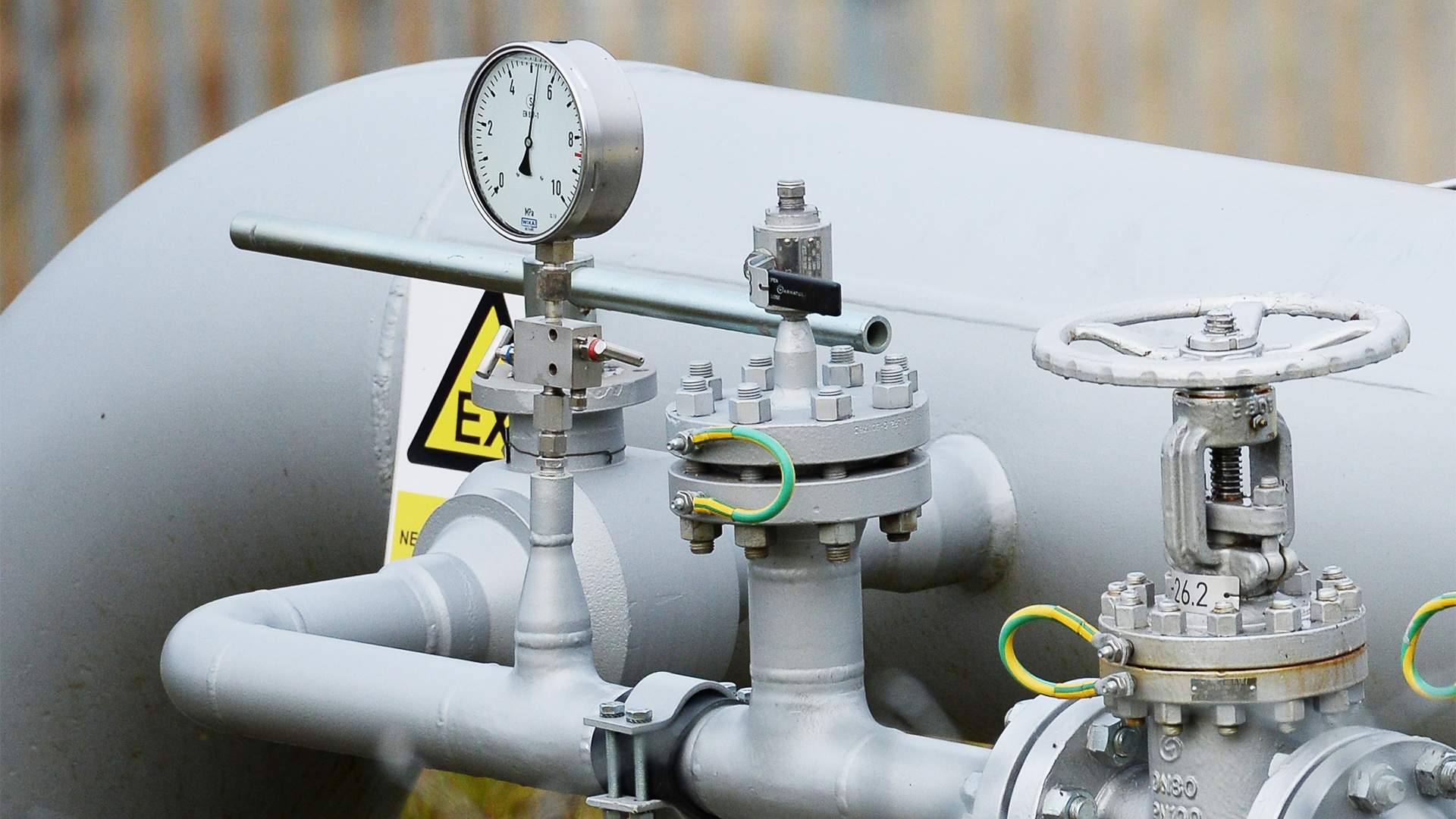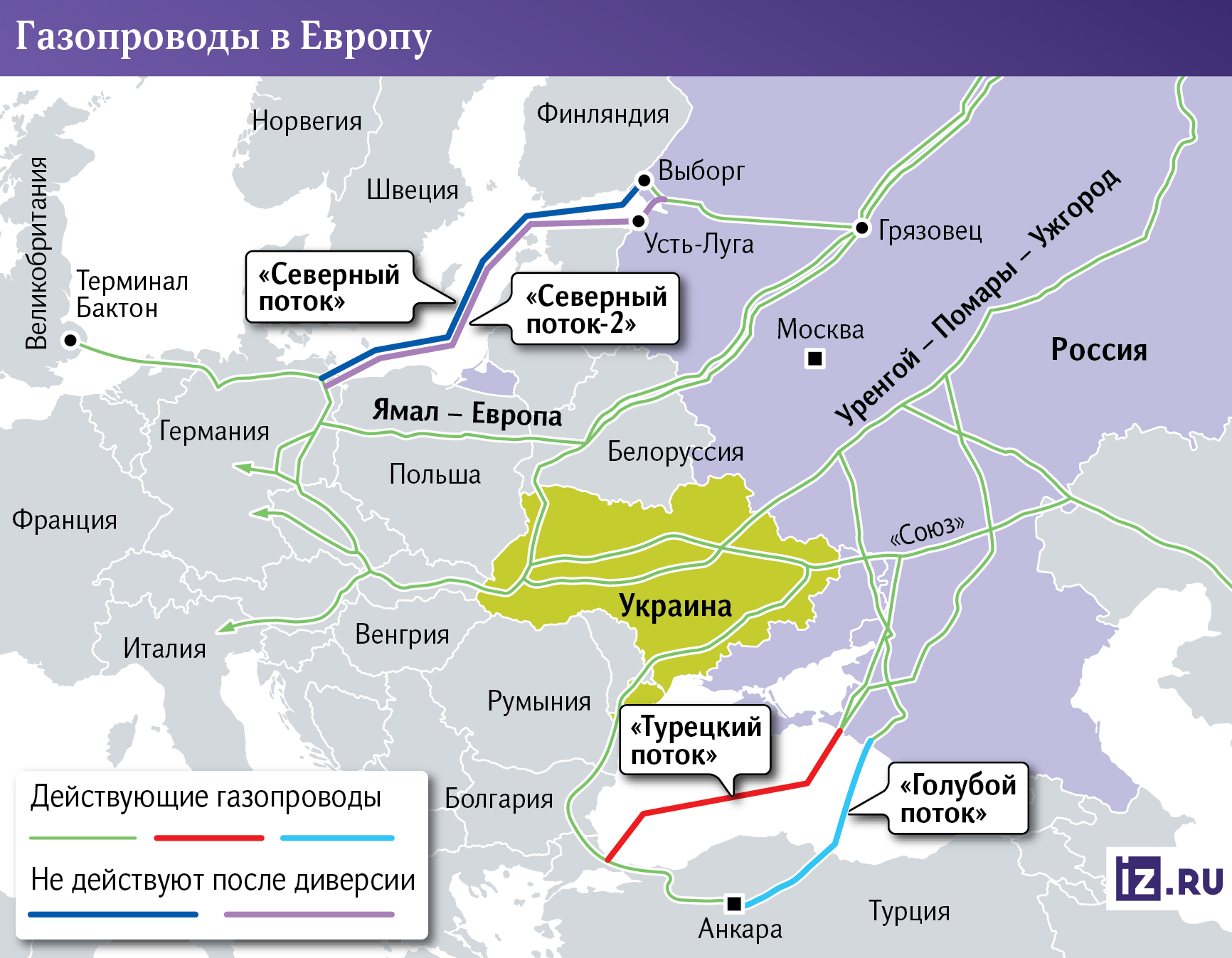Next suspension: gas in Europe could double in price in winter

The cost of gas in Europe in the coming winter may double and exceed $1,000 per 1,000 cubic meters, experts told Izvestia. The main problem of pricing on the European market today is its absolute unpredictability: even insignificant reasons lead to an inadequate surge in prices, analysts say. On November 15, after the Austrian OMV warned about "potential cessation of supplies" from Russia, the cost of gas in Europe reached the annual maximum - it exceeded $500 per 1 thousand cubic meters.
What influences the growth of gas prices in Europe
The price of gas in Europe may double in the coming winter, experts told Izvestia.
- The current economic and political situation in Europe suggests that energy resources in the European market will remain an extremely volatile commodity. The scenario of gas price doubling this winter isquite possible, prices may exceed the level of $1000 per 1 thousand cubic meters," Dmitry Gusev, deputy chairman of the supervisory board of the association "Reliable Partner" (an association of producers and sellers of energy resources), told Izvestia.
Earlier, on November 15, the price of blue fuel in Europe reached an annual maximum on the background of reports about the termination of Russian gas supplies to Austria and exceeded the cost of $500 per 1 thousand cubic meters. At the same time in mid-October its cost was about $440, indicate the data of the TTF exchange.
In mid-November, the Austrian company OMV reported that it won in arbitration proceedings against Gazprom Export because of the temporary cessation of Russian gas suppliesin the fall of 2022. Based on the court ruling, it decided to recover €230 million from the losing party. At the same time, the company admitted that after the court ruling, the contractual relations with Gazprom Export would deteriorate, up to the point of termination of gas supplies by the Russian side.
Against the backdrop of this statement, gas prices in Europe reached their highest level for the last year. At the time, some analysts warned that the volume of gas transit through Ukraine could be almost halved if Gazprom halts supplies because of OMV's actions.
"Izvestiya sent a request to Gazprom asking it to comment on the situation.
On November 16, OMV confirmed the termination of gas supplies from Russia. "At the same time, Gazprom said that it was supplying natural gas to Europe via Ukraine as usual.
Russian gas continues to flow to Europe via Ukraine for further transit to Slovakia, Austria and other neighboring countries. "Gazprom could have imposed a restriction on gas supplies directly to Austrians, but left the possibility of reselling it to Slovaks without stopping supplies, Dmitriy Gusev said. Such a measure could have been introduced to prevent the recovery of funds lost in court, the expert added.
These volumes of supplies are necessary for Europe, otherwise it would have already refused them, said Alexei Grivach, Deputy Director General of the National Energy Security Fund. However, there are political forces in Europe that would like to further escalate the conflict with Russia and, as a consequence, intensify the energy crisis in the European Union. Therefore, transit remains in limbo, the expert believes.
Pricing problems
The main problem of pricing on the European gas market today is its absolute unpredictability, Valery Andrianov, Associate Professor at the Financial University under the Government of the Russian Federation, told Izvestia.
- On the one hand, gas prices are far from their relatively recent peaks [summer 2022] of $3500-4000 per 1,000 cubic meters. On the other hand, they are noticeably higher than before the breakdown of energy cooperation with Russia. Thus, in 2020 they were falling to $117 per 1,000 cubic meters," he noted.
According to the expert, the decline in prices to peak values is not the result of any efforts of European regulators, but the result of falling demand for blue fuel in the Old World.
- Moreover, the decline occurs not only and not so much in the housing and utilities sector. One could often hear jokes about "freezing" Europeans and forecasts that Europe will not survive the next winter. There is enough gas for heating. But there is a collapse in demand from industry, which cannot afford the expensive fuel. And this is a direct path to deindustrialization of Europe," said the expert.
Earlier in the budget committee of the Bundestag "Izvestia" was informed that Germany is facing the departure of German companies to the U.S. and China against the background of rising gas prices in Europe. The chemical industry has been mainly affected: in two years Germany has lost about a quarter of the output of local companies in this industry. According to a recent survey by chemical industry association VCI, nearly one in ten companies plans to halt production processes due to the unclear timing of the transition to using hydrogen as an energy carrier.
In 2022, against the backdrop of the SWO, the supply of raw materials from Russia to the West was gradually cut off. "Nord Stream-1" was damaged in a sabotage, supply through the Yamal-Europe pipeline is not available due to Russian counter-sanctions, and "Nord Stream-2" was never put into operation. As a result, Europe has been deprived of large volumes of cheap fuel.
Pipeline gas supplies from Russia to non-CIS countries are currently carried out through three routes: through the Ukrainian gas transportation system, through the Turkish route (including the Turkish Stream and Blue Stream pipelines, through which fuel is supplied to Turkey, South-Eastern and Central Europe), and through the Siberia Power pipeline. The supply volumes along the first two routes may amount to about 30 billion cubic meters per year.
According to Valery Andrianov, it is not so much high gas prices that are dangerous for the European economy as their unpredictability.
- How can you plan production volumes, commissioning of new facilities in industry if you don't know how much gas will cost - $100 or $10 thousand per 1 thousand cubic meters? Any, even the most insignificant reasons (for example, a decrease in production at just one gas field in Norway) immediately leads to an inadequate surge in gas prices throughout Europe. This is a clear indication of the instability of the situation," the expert concluded.
We can expect that the gas price in Europe until the end of the year will fluctuate in the range of $400-600 per 1 thousand cubic meters, said Natalia Milchakova, a leading analyst at Freedom Finance Global. However, everything will depend on whether the first month of winter in Europe turns out to be warm and how actively gas will be consumed from storage facilities, the expert said.

On January 1, 2025, Russia will officially stop supplying gas through Ukraine due to the expiration of the contract. The European Commission says that they are ready for this, and Europe is fully supplied with gas. If December and the whole winter turn out to be warm, gas prices will decrease rather than increase, as European consumers have gas in underground storage facilities, Natalia Milchakova noted.
If the winter, on the contrary, turns out to be too cold, the complete cessation of Russian gas transit may be critical for Europe, the analyst added. However, Russia can increase deliveries via Turkish Stream - the biggest problems will be only for Ukraine, which will lose income from the transit of Russian gas, the expert concluded.
Переведено сервисом «Яндекс Переводчик»




